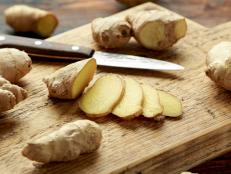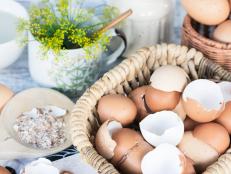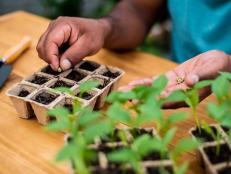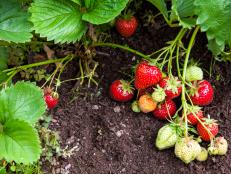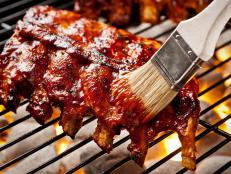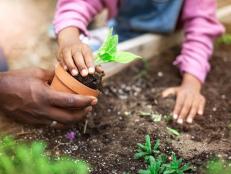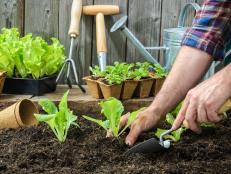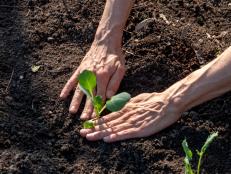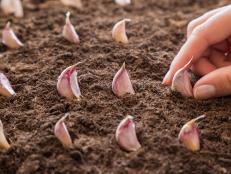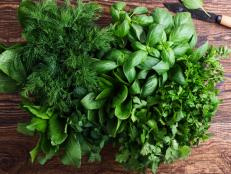How to Plant and Grow Brussels Sprouts
This cool-season crop is easy to grow at home, as long as you have patience.


Irina Stevenson/Getty
Over recent years, Brussels sprouts have become a popular vegetable choice, and for good reason; they’re hearty, healthy and available in grocery stores year-round. When seared in the pan and dressed with parmesan cheese or balsamic vinegar glaze they take eating greens to a whole other level. Not to mention, they look like a work of art as the mini cabbage head-like sprouts fill the 30-inch stalk.
Part of the brassica family, which includes cabbage, broccoli and cauliflower, this cool-season crop is easy to grow in home gardens, as long as you have patience; as Brussels require a long growing season of 80 – 120 days depending on the variety.
Like other vegetables in the brassica family, Brussels sprouts taste better when subjected to cool weather, such as a light frost or snow, which means you’ll be planting late spring to mid-summer and harvesting in the fall. When touched by frost right before harvest, Brussels sprouts will be best flavored, firm, and full of nutrients. (Just how we like ’em!)
So, if you’re looking to enjoy the delicious flavor of homegrown Brussels, here’s everything you need to know for a successful growing season!
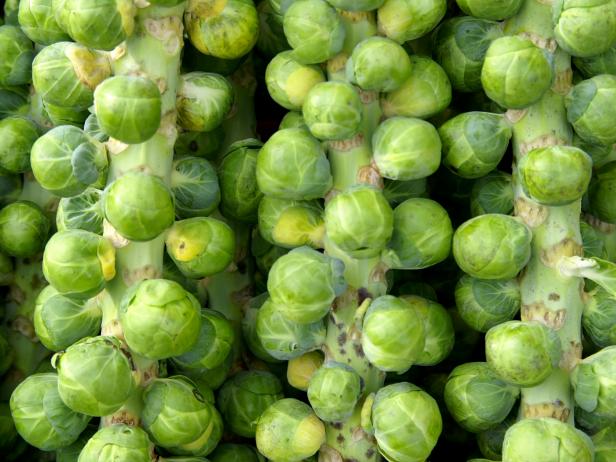
rest/Getty
How to Start Brussels Sprout Seeds Indoors
If you live in an area with cold winters, you can start your seeds indoors about two to three weeks before the last spring frost. It’s easy to do and will give you a head start on the growing season.
First, choose an indoor space where the temperature hovers around 77 degrees and has plenty of light.
Start seeds in individual pots that are big enough for three-inch seedlings to form, and plant one Brussels sprout plant per pot, or gently thin out after seedlings sprout.
Place the seeds about 1/4- to 1/2-inch deep into the soil and lightly cover the seeds with soil. (A seed starting soil mix will work just fine for this project.)
After planting the seeds, keep the soil moist, but not soaking wet. Spritz the soil daily with water using a spray bottle to help maintain the correct amount of moisture.
Seeds should germinate between five to eight days.
Once the seedlings have reached three to seven inches tall and have two to four leaves, you can plant them in your outdoor garden where they will need a minimum of 6 hours of sunlight.
Plant individual seedlings in your garden and space them 18 to 24 inches apart in a hole big enough for the root length.
Water thoroughly, and add two to three inches of mulch around the base of each plant to help them retain moisture. (And keep pesky weeds at bay!)
How to Plant Brussels Sprout Seeds Directly Into Your Garden
For locations with mild winters, you can sow seeds directly into your garden bed by early to mid-summer which will result in an early fall or early winter harvest.
Sunlight Requirements
Brussels sprouts need a minimum of six or more hours of sun per day, so choose a spot where they can bask in the sunlight. Not enough sunlight can slow the sprouts’ maturity, resulting in poor growth.
Ideal Soil Conditions
The ‘mini cabbages’ prefer neutral to slightly acidic soil with a pH level of 6.5-7. They enjoy fertile, well-draining soil with plenty of organic matter (aged compost), but can handle a bit of sand or clay. To measure the pH level of soil, you can use a pH meter, which is inexpensive and easy to use.
Seed Spacing Instructions
When planting, space your seeds three to four inches apart and place them 1/4- to 1/2-inch deep in the soil. Once the seedlings have reached three inches in height, thin them ou,t selecting the strongest and healthiest seedlings to remain in the soil. Fertilize with a nitrogen-rich product, such as organic need oil, after thinning.
Watering Needs
Regular watering is key when it comes to big sprout harvest. If the soil is left too dry, the sprouts will shrivel and lack proper development. Check the soil each day making sure the top inch of soil is moist, and aim to provide your plants with one to two inches of water per week during dry weather; mulching will help reduce the need for watering maintenance.
Feeding Your Brussels
Brussels sprouts love fertile soil and need to be fertilized two times per growing season. The first fertilization should occur when the plant reaches 12 inches in height and the second dose four weeks later.
Organic fertilizer like a fish emulsion with plenty of phosphorous, potassium and magnesium is a great feeding option. The details on the back of the fertilizing product will have proper application instructions for you to follow.
Common Pests
Aphids, cabbage worms, cutworms, and loopers are common pest enemies of the Brussels plant, but fear not, applying organic neem oil weekly will help keep pests at bay as well as boost overall plant immunity (which also helps keep pests away).

GoodLifeStudio/Getty
How to Harvest Brussels Sprouts
Get ready to roast, fry, steam, boil or sear those delicious Brussels you grew all on your own!
Sprouts start maturing at the bottom of the plant moving upward, so it’s ideal to harvest the lowest sprouts first when they have reached 1 to 1 1/2 inches in diameter. Look for sprouts that are compact and have a deep green color; once they do, they’re ready for picking. Remember to wait after the first frost for optimal taste and texture.
To harvest, simply cut or twist the sprout off of the stem gathering only what you will be consuming shortly after. This allows for the freshest taste possible.
You can also harvest the green leaves on the plant and cook and serve them as a side dish.
Cutting the bottom leaves off of the stem will help promote increased Brussels sprout growth.
After harvesting, the second round of sprouts will begin to grow at the bottom. They will not be as compact as the first harvest, but still edible.
Good Things to Know
- A Brussels sprout plant will typically produce 40 to 60 sprouts (heads) per plant which is equivalent to 24 ounces in weight.
- Supporting or staking the Brussels plant stem will protect it from winds that can snap the stem destroying the crop, or if the plant becomes top-heavy. Stake each plant individually with a thick bamboo or wooden stake, or a piece of rebar and loose twine.
- The worst garden companions for Brussels are pole beans, lettuce and strawberries.
- The best garden companions for Brussels sprouts are onions, corn, potatoes, dill, celery, rosemary, sage, peas, tomatoes, bush beans, garlic, spinach and chamomile.
- Brussels sprouts grow tall at first and do not start producing sprouts until they almost reach full height – so don’t panic if all you see is the stem for a while.
- To extend your Brussels sprout harvest in the cold season, mulch the base of the plants with straw for extra insulation.
Related Content:
























